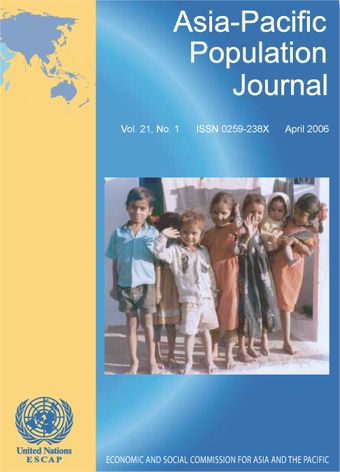-
Singapore’s family values: Do they explain low fertility?
- Source: Asia-Pacific Population Journal, Volume 21, Issue 1, Jan 2007, p. 65 - 84
-
- 12 Jan 2007
Abstract
To the Government of Singapore, the country’s declining marriage and fertility rates are serious national problems. It believes that those trends will have negative consequences for economic growth and Singapore’s overall quality of life in the future as Singapore faces a “greying population”. In 2003, there were 21,962 marriages registered, lower than 2002 (23,189), the 1990s (average 24,000) and the 1980s (average 23,000) (Singapore Department of Statistics, 2004: 14). Between 1970 and 1975, Singapore’s total fertility rate averaged 2.6; in 1980, it was 1.80; in 1986, 1.43; in 1990, 1.83; in 2000, 1.60; and in 2003, it had fallen to 1.24.1 During the same period, the population census also found that there was a higher proportion of Singaporeans remaining unmarried. In the Singapore Census of Population 2000, for the age group 30-34, one in three Singaporean males and one in five Singaporean females were unmarried (Singapore Department of Statistics, 2001: 2). The State is particularly concerned that Singapore’s future economy will be unable to sustain an ageing population, where 20 per cent of the population would be aged 65 and older by 2030 (Singapore Department of Statistics, 2002: 6).





